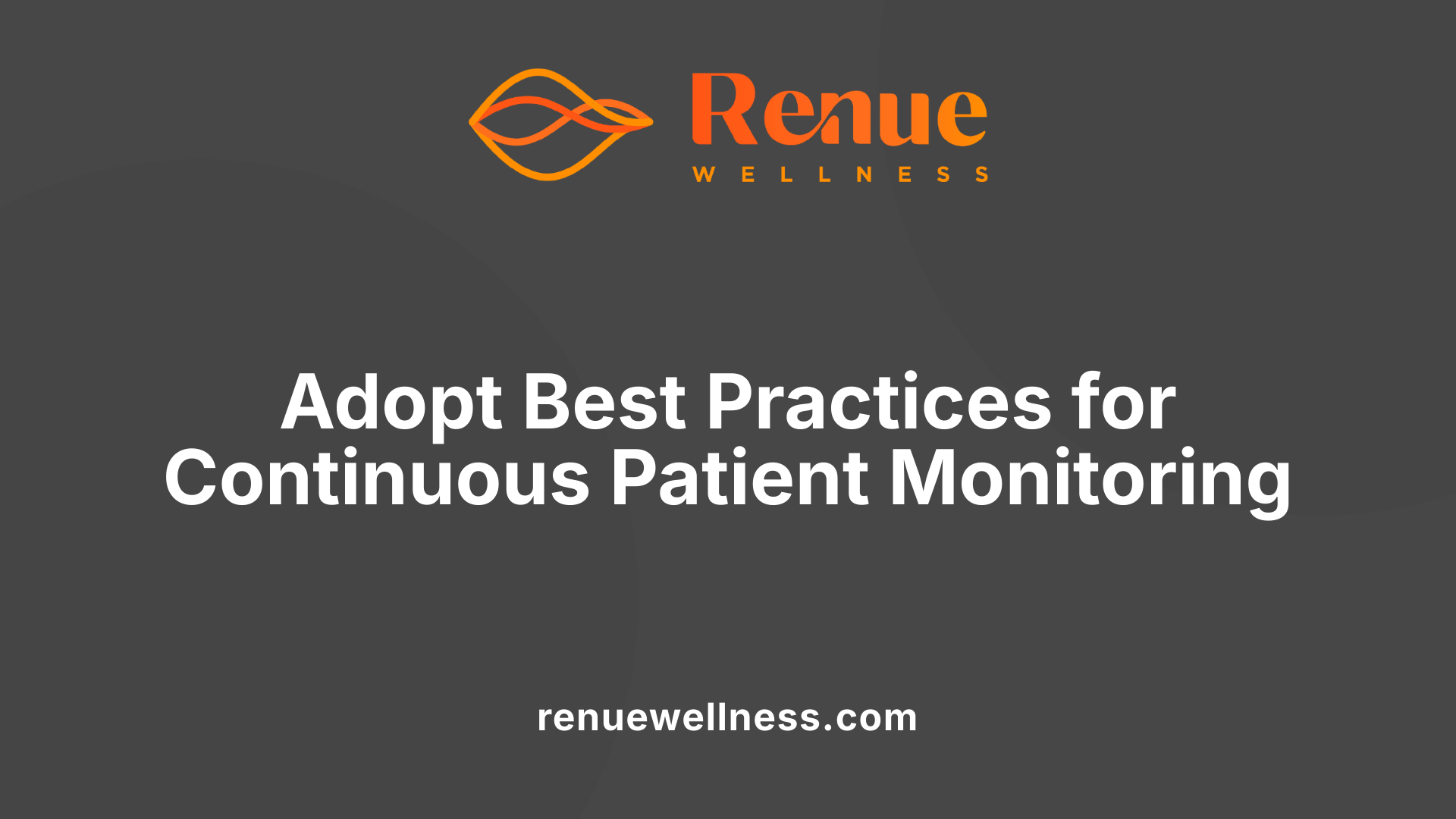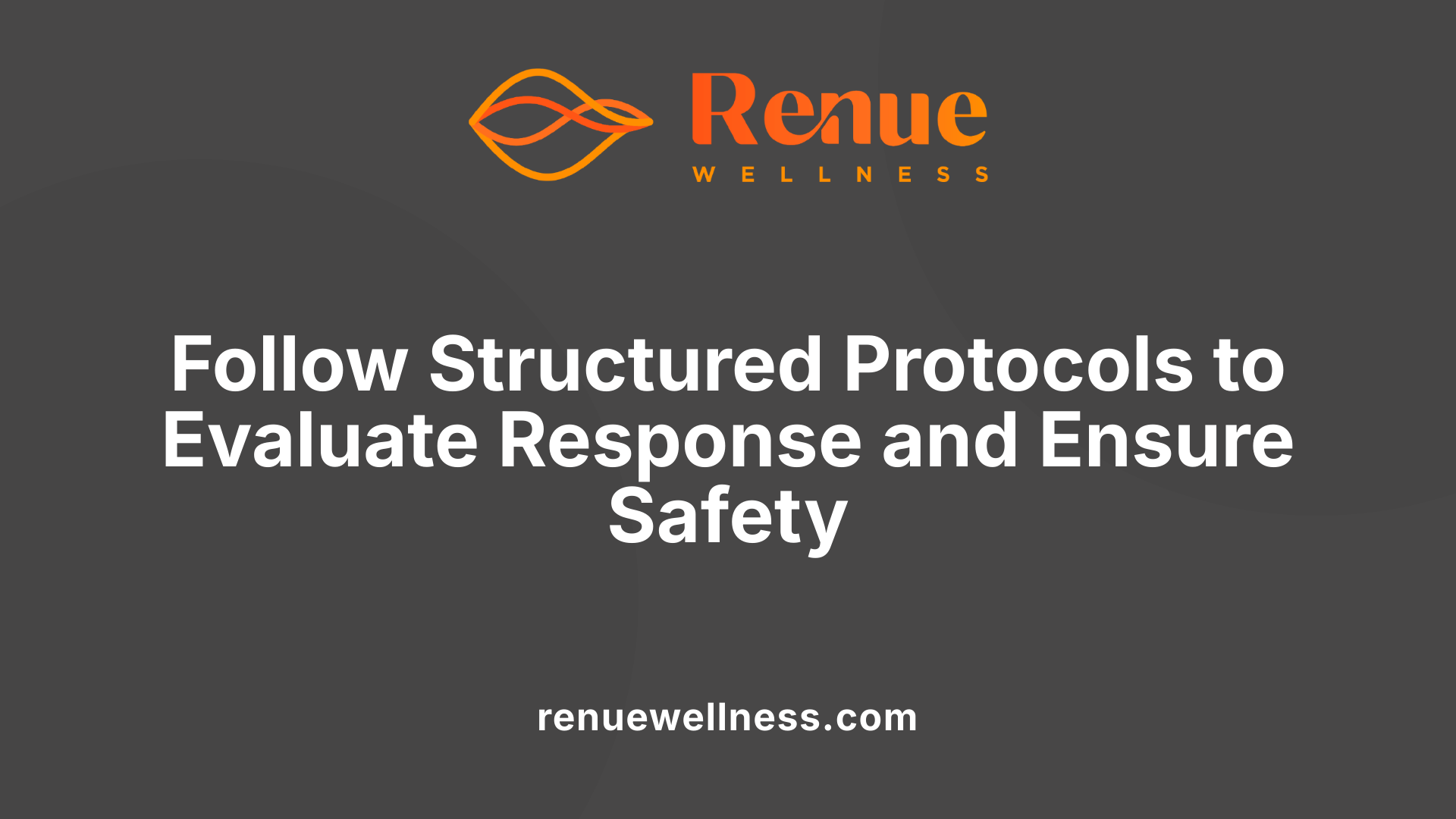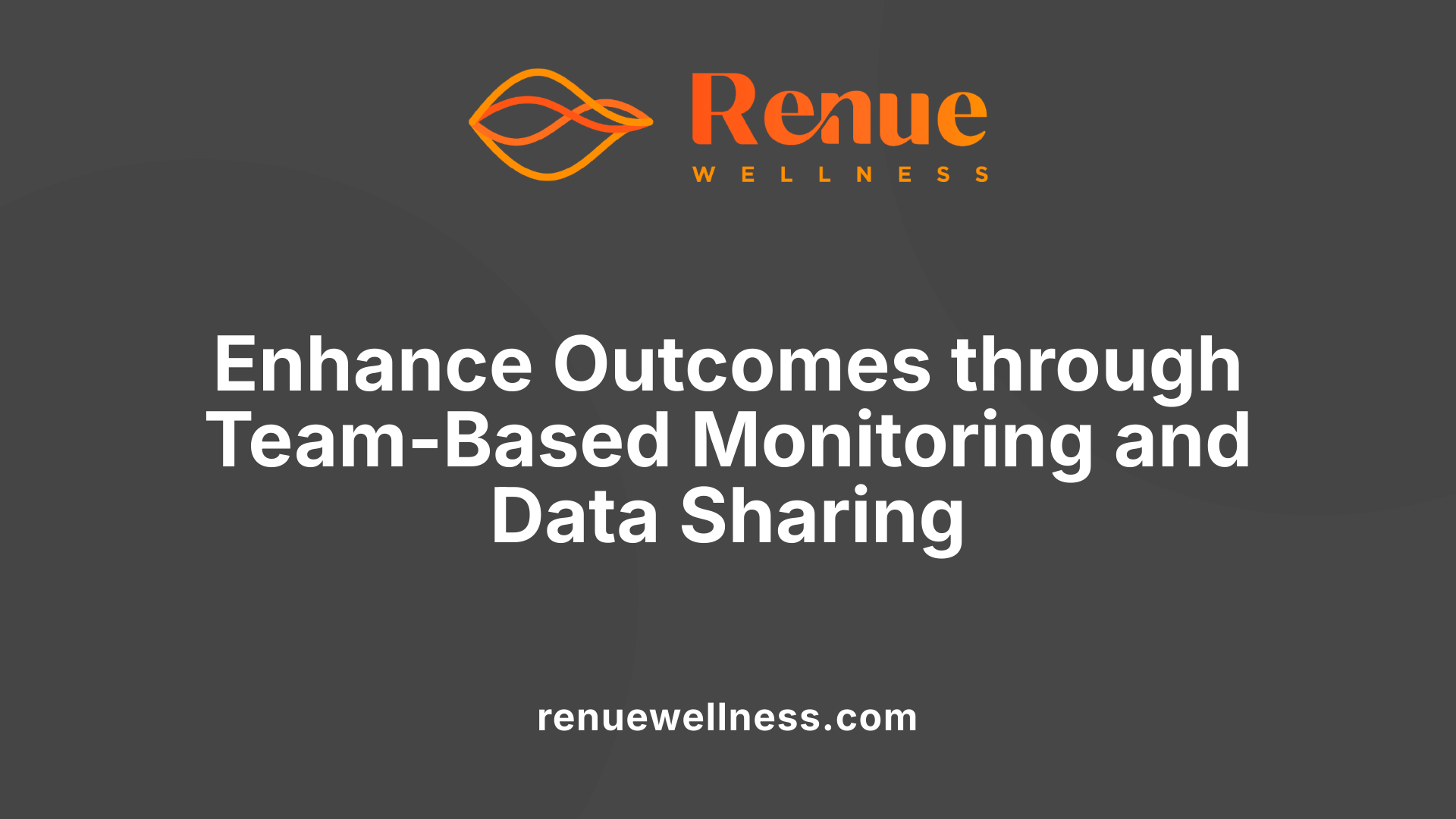How Referring Physicians Can Monitor Ketamine Patient Progress


July 22, 2025
Understanding the Role of Referring Physicians in Ketamine Treatment Monitoring
Ketamine therapy has emerged as a promising treatment for treatment-resistant depression, PTSD, and chronic pain conditions. As the frontline coordinators, referring physicians play a critical role in overseeing patient progress throughout the treatment journey. Effective monitoring encompasses a combination of clinical assessments, systematic tools, collaborative practices, and thorough documentation. This article explores comprehensive strategies and best practices for referring physicians to track treatment outcomes, ensure safety, and maximize therapeutic benefits for their patients.
Establishing Initial Patient Evaluation and Selection Protocols

What guidelines exist for follow-up and patient assessment during ketamine treatment?
Effective monitoring during ketamine therapy relies on structured follow-up protocols that ensure patient safety and treatment success. Clinicians are advised to conduct comprehensive psychiatric evaluations before, during, and after treatment sessions. This includes using measurement-based tools such as the Patient Health Questionnaire-9 (PHQ-9) for depression and the Generalized Anxiety Disorder-7 (GAD-7) to track symptom changes.
Regular assessment of suicidality, cognitive function, and possible substance use is also critical. During infusions, vital signs like blood pressure, heart rate, respiratory rate, and oxygen saturation must be monitored at frequent intervals—often every 15 minutes—to promptly identify adverse reactions.
Pre- and post-treatment laboratory tests, such as thyroid function tests, metabolic panels, and urinalysis, are recommended to ensure ongoing safety. Proper documentation of demographics, symptom severity, treatment response, and adverse events supports continuous care. Some guidelines suggest maintaining a national registry to collect data on safety and efficacy, further informing best practices.
Overall, consistency in evaluations allows for personalized adjustments and helps manage potential risks effectively.
Tools and Methods for Tracking Treatment Outcomes

What tools and methods are used to track treatment outcomes in ketamine therapy?
Monitoring the effectiveness of ketamine therapy involves a variety of tools and approaches designed to capture changes in mental health symptoms, brain function, and side effects. This comprehensive assessment enables clinicians to make informed decisions about ongoing treatment plans.
One of the most common methods is the use of standardized symptom rating scales. These scales provide measurable data on the severity of depression or anxiety and include instruments such as the Patient Health Questionnaire-9 (PHQ-9) for depression and the Generalized Anxiety Disorder-7 (GAD-7). Regular administration of these scales helps track symptom trajectory over time.
In addition to symptom scales, patient-reported outcome measures (PROMs) enable individuals to provide personal insights into their mental and emotional states. These self-reflections can be collected via diaries, mood trackers, or structured questionnaires, which improve understanding of day-to-day experiences and treatment effects.
Neuroimaging techniques are increasingly utilized in research settings to observe changes in brain activity and connectivity associated with ketamine treatment. Technologies such as electroencephalography (EEG), functional magnetic resonance imaging (fMRI), and magnetoencephalography (MEG) allow clinicians and researchers to visualize neuroplastic changes and identify biomarkers of response. These methods can reveal alterations in neural circuits linked to mood regulation and cognitive function.
Peripheral biological markers are also important. Measuring inflammatory cytokines like IL-1β and IL-6 helps evaluate the role of inflammation in depression and how ketamine might modulate immune response. Blood tests assessing these markers can support understanding of the biological mechanisms underlying clinical improvements.
Safety evaluation is a crucial part of treatment monitoring. Tools such as the Ketamine Side Effect Tool (KSET) and its abbreviated version, KSET-R, assist clinicians in systematically assessing side effects, including dissociation, nausea, dizziness, or blood pressure changes. Consistent safety assessments ensure that adverse events are detected early and managed appropriately.
Integrating data from clinical scales, patient feedback, neuroimaging, and biological markers provides a multidimensional view of treatment outcomes. This comprehensive approach helps clinicians personalize therapy, identify responders versus non-responders, and make evidence-based adjustments.
Here is a summary table of the tools and their functions:
| Tool/Method | Purpose | Additional Details |
|---|---|---|
| Symptom Rating Scales (PHQ-9, GAD-7) | Measure symptom severity | Administered regularly to track progress |
| Patient-Reported Outcome Measures | Capture personal insights | Mood diaries, journals, checklists |
| Neuroimaging (EEG, fMRI, MEG) | Visualize brain activity | Used mainly in research, not routine clinical care |
| Peripheral Biomarkers (Cytokines) | Assess biological response | Blood tests for IL-1β, IL-6 |
| Side Effect Evaluation Tools (KSET, KSET-R) | Monitor adverse events | Ensures safety during treatment |
| Integration of Data | Comprehensive outcome tracking | Combines symptomatic, biological, and safety data |
In practice, combining these methods allows for a nuanced understanding of how a patient responds to ketamine therapy, guiding tailored interventions and supporting long-term success.
Protocols and Strategies for Effective Monitoring

What are the best practices for monitoring patient progress during ketamine therapy?
Monitoring during ketamine therapy is essential to ensure patient safety and to gauge treatment effectiveness. Best practices include routine checks of vital signs such as blood pressure, heart rate, respiratory rate, and oxygen saturation. These assessments should be performed at regular intervals, especially during infusions, using reliable monitoring equipment like pulse oximeters and blood pressure cuffs. Real-time data collection tools, such as VitalStream or similar devices, are now widely used in clinical settings to record physiologic parameters continuously, allowing clinicians to respond swiftly to any fluctuations.
In addition to physiological monitoring, incorporating standardized clinical questionnaires helps quantify symptom improvements. Tools such as the Patient Health Questionnaire-9 (PHQ-9) for depression and GAD-7 for anxiety are frequently used before, during, and after treatment sessions. These objective measurements support adjustments in dosing or frequency of infusions.
Subjective responses are equally important. Patients can keep mood journals or utilize behavior checklists to record their emotional and cognitive states between sessions. Voice memos or digital apps for mood tracking enable patients to reflect on subtle changes, supporting a comprehensive understanding of treatment efficacy.
Furthermore, informal tracking tools like mood diaries or symptom logs provide valuable insights into daily functioning, emotional well-being, and side effect occurrence. These tools promote patient engagement and provide therapists with detailed data to tailor ongoing treatment.
A multidisciplinary approach combining these various assessment methods enhances overall safety and outcome measures. For example, integrating medical observations with therapy sessions—such as mindfulness exercises or lifestyle interventions—can improve neuroplasticity and long-term benefits.
Long-term monitoring involves follow-up assessments that help determine the need for maintenance infusions or additional interventions. Collecting data through standardized scales and informal tools guides clinicians in making informed decisions about relapse prevention and ongoing care.
In summary, effective tracking combines regular physiological monitoring, patient-reported outcomes, and informal self-assessment strategies. This comprehensive approach ensures safety, supports personalized treatment planning, and optimizes recovery trajectories during ketamine therapy.
Clinical Protocols for Evaluating Response and Safety

What clinical protocols are recommended for evaluating patient response and safety during ketamine therapy?
Treating physicians and clinical teams follow structured protocols to monitor patients effectively throughout ketamine therapy. Before starting treatment, a comprehensive assessment is performed. This includes a detailed medical and psychiatric history, physical examination, and diagnostic labs such as complete blood count (CBC), metabolic panels, liver function tests, and thyroid-stimulating hormone (TSH) analysis. Screening for contraindications like substance abuse, high blood pressure, pregnancy, and cardiac issues ensures patient safety.
Once deemed suitable, patients undergo baseline symptom evaluations using standardized depression or anxiety scales, such as the Montgomery-Åsberg Depression Rating Scale or GAD-7, to track treatment progress. This initial evaluation provides a benchmark for subsequent assessments.
During infusion sessions, close monitoring of vital signs is standard practice. Continuous measurement of blood pressure, heart rate, oxygen saturation, respiratory rate, and end-tidal CO2 helps detect physiological fluctuations early. The healthcare team may also observe levels of dissociation or psychotropic side effects using tools like the Clinician-Administered Dissociative States Scale (CADSS).
Standardized dosing protocols are employed, such as administering 0.5 mg/kg over 40 minutes for psychiatric indications or adjusted doses for chronic pain. Patient responses are assessed throughout infusions, with regular intervals every 15 minutes to customize care and manage adverse effects swiftly. Frequently observed side effects—such as dissociation, nausea, light-headedness, or transient hypertension—are documented, and intervention protocols are in place.
Post-treatment, practitioners evaluate mood improvements, cognitive function, and substance use through follow-up visits. Regular use of standardized scales, patient self-report journals, mood trackers, and informal tools like voice memos assist in documenting subtle changes.
Safety protocols also emphasize readiness for emergencies, including equipment for managing hypertensive episodes, agitation, or severe dissociation. Proper disposal of unused medication and recording all adverse events into national or institutional registries help monitor long-term safety and efficacy.
The integration of these procedures ensures comprehensive patient care, facilitates early identification of complications, and supports ongoing treatment adjustments. Continual staff education, through literature review, online courses, and peer visits, helps maintain high standards of safety and responsiveness.
In summary, effective evaluation during ketamine therapy encompasses pre-treatment screening, vigilant in-session monitoring, post-treatment assessments, and adherence to safety guidelines, allowing clinicians to optimize outcomes and maintain patient safety.
Collaborative Monitoring and Data Sharing

How can healthcare providers collaborate effectively to monitor patient progress in ketamine treatment?
Effective monitoring of patients undergoing ketamine therapy relies heavily on a team-based approach involving physicians, nurses, therapists, and other healthcare professionals. Establishing clear communication channels and shared documentation is essential for coordinated care.
Many facilities utilize shared electronic health records (EHRs) to allow real-time updates on patient status, infusion details, and reaction to treatment. This shared platform ensures that all team members—whether they are conducting the infusion or providing post-treatment support—are informed about the patient's current condition and past responses.
Regular review meetings are critical for ongoing assessment. These discussions help adjust treatment plans based on symptom improvement, side effects, and safety parameters. Such meetings also facilitate the exchange of insights among team members, leading to more tailored care.
In addition to documentation and meetings, multidisciplinary teams should follow standardized protocols for monitoring during infusions. This includes checking vital signs like blood pressure, heart rate, respiratory rate, and oxygen saturation at regular intervals—such as every 15 minutes during infusion—and responding promptly to any adverse events.
Thorough pre-treatment assessments—including psychiatric evaluations, physical exams, and relevant lab tests—lay the groundwork for identifying contraindications and customizing treatment doses. During treatment, clinicians should monitor for signs of toxicity or adverse effects, such as hypertension, tachycardia, dissociation, hallucinations, or nausea.
Post-treatment, ongoing assessments should involve using standardized tools like the Patient Health Questionnaire-9 (PHQ-9) and GAD-7, alongside informal tracking tools such as mood journals or voice memos. Sharing these insights among providers facilitates timely adjustments, helping optimize therapeutic outcomes.
Maintaining an environment of openness and collaboration ensures that everyone involved in the patient's care remains aligned. This coordinated effort not only enhances safety but also improves the likelihood of positive treatment response, addressing both physical and mental health needs comprehensively.
| Aspect | Implementation | Details |
|---|---|---|
| Team-based approach | Multidisciplinary collaboration | Including psychiatrists, nurses, therapists, and referring physicians |
| Data sharing | Electronic health records | Enables real-time updates and comprehensive recordkeeping |
| Communication | Regular meetings | Ensures plan adjustments and shared insights |
| Monitoring protocols | Vital signs and symptom assessments | During and post-infusion, tailored to individual patient needs |
| Patient engagement | Informal and formal tools | Mood trackers, journals, and ongoing assessments |
| Safety and efficacy | Adherence to SOPs and guidelines | Includes dose adjustments, side effect management, and follow-up evaluations |
By integrating these methodologies, healthcare providers create a cohesive network that supports patient safety, monitors progress thoroughly, and adapts treatment strategies effectively, ultimately enhancing the success of ketamine therapy.
Documentation and Data Collection Techniques
How can clinicians effectively document and collect data on ketamine treatment outcomes?
Accurate documentation and systematic data collection are essential for monitoring the effectiveness and safety of ketamine therapy. Clinicians can utilize electronic health records (EHRs) combined with secure digital platforms such as REDCap or other HIPAA-compliant tools to gather comprehensive data. These platforms enable the collection of detailed information, including patient demographics, medical history, ketamine dosage, administration routes, treatment schedules, and any concomitant therapies.
In addition to these administrative records, incorporating standardized outcome measures at various points in the treatment process helps track progress reliably. Common scales like the Patient Health Questionnaire-9 (PHQ-9) and the Generalized Anxiety Disorder-7 (GAD-7) are valuable for assessing mental health conditions before, during, and after treatment.
Regular assessment intervals—such as every infusion, weekly during initial series, and follow-up at specified time points—allow clinicians to observe patterns, detect side effects early, and adjust treatment plans accordingly. These assessments should be documented longitudinally to provide a clear picture of patient trajectories.
For long-term safety and efficacy data, establishing registries is crucial. Systems like national registries or centralized databases enable aggregation of treatment outcomes across multiple centers, which support research efforts and safety surveillance. Standardized tools such as the Ketamine Side Effect Tool (KSET) facilitate consistent recording of adverse events.
Training staff thoroughly on data entry protocols guarantees accuracy and completeness. Including qualitative data, such as patient feedback, written reflections, or voice memos, adds depth to quantitative measures. Documenting subtle shifts—improved motivation, sleep quality, emotional reactivity—provides valuable insights into therapeutic progress.
In summary, effective documentation involves merging digital data collection, validated assessment tools, systematic follow-up, and detailed qualitative records. This comprehensive approach enhances individual patient care, informs ongoing treatment adjustments, and contributes valuable information to the medical community’s understanding of ketamine’s long-term impact.
Patient Engagement Strategies in Monitoring Progress
What strategies can be used to engage patients in monitoring their progress during ketamine therapy?
Engaging patients actively in their treatment process is essential for optimizing outcomes during ketamine therapy. One effective approach is the use of validated self-report scales such as the Patient Health Questionnaire-9 (PHQ-9) and the Generalized Anxiety Disorder-7 (GAD-7). These standardized tools allow patients to regularly rate their symptoms and emotional states, providing clinicians with measurable data on their mental health status.
Digital applications also facilitate ongoing monitoring. Platforms like Osmind enable patients to log daily mood changes, side effects, and behavioral patterns conveniently. Incorporating mood trackers, journals, voice memos, and behavior checklists helps patients reflect on subtle improvements, like enhanced sleep, increased motivation, or better emotional regulation. Such tools boost awareness and foster a sense of ownership in managing their condition.
Education plays a vital role. Patients should be reassured about the temporary nature of common side effects—such as headaches, fatigue, or nausea—and emphasized the importance of responsible supervision at home post-session. Explaining how these symptoms can be managed with over-the-counter medications or reassurance helps reduce anxiety.
Establishing clear, collaborative goal setting is another effective technique. When patients understand what to expect and are involved in setting targets, they tend to stay motivated. Regular feedback sessions where clinicians discuss progress and adjust treatment plans reinforce engagement.
Support systems further enhance adherence. Encouraging participation in peer support groups offers shared experiences and emotional backing. For example, patients might join online forums or local group sessions tailored to depression or PTSD recovery.
Lifestyle interventions such as mindfulness, journaling, and physical activity complement ketamine therapy and keep patients invested in their progress. These activities can be integrated into routine care and discussed during follow-up visits.
Consistent check-ins—whether via telehealth, phone calls, or in-person visits—are crucial for providing personalized feedback. Recognizing even small improvements in mood, motivation, sleep, or communication helps patients see the benefits of ongoing therapy.
In summary, a comprehensive, patient-centered strategy combining measurable assessments, educational support, peer involvement, lifestyle modifications, and regular communication creates a strong foundation for sustained engagement and successful treatment outcomes during ketamine therapy.
Synthesizing Best Practices for Patient Monitoring in Ketamine Therapy
In conclusion, effective monitoring of patient progress during ketamine therapy hinges on a structured, collaborative, and comprehensive approach. Referring physicians must integrate clinical assessments, standardized measurement tools, real-time vital sign monitoring, and neurobiological evaluations to capture the full scope of treatment response and safety. Employing systematic documentation, utilizing advanced data collection methods, and fostering a team-based environment with clear communication channels are paramount. Equally essential is engaging patients actively in their own care through validated self-report tools and education, thereby promoting adherence and early detection of issues. By embracing these best practices, referring physicians can optimize treatment efficacy, enhance patient safety, and contribute to the evolving landscape of ketamine therapy as a validated mental health intervention.
References
- The Ketamine Experience: What Can a Patient Expect When ...
- [PDF] Ketamine Infusion Therapy Survey Summary - AANA
- How to Track Your Progress During Ketamine-Assisted ...
- Developing an IV Ketamine Clinic for Treatment-Resistant Depression
- Everything You Need to Know When Referring Patients to Ketamine ...
- Referring Physicians - Complete Ketamine Solutions
- Ketamine Treatment: The Role of the Nurse
- Revolutionizing Mental Health: A Guide for Referring Doctors
- How to Talk to Your Doctor About Ketamine Infusion Therapy
Recent Posts
Conditions Treated
AnxietyDepressionOCDPTSDPostpartum DepressionPain ManagementSubstance AbuseSuicidal IdeationOur Location


